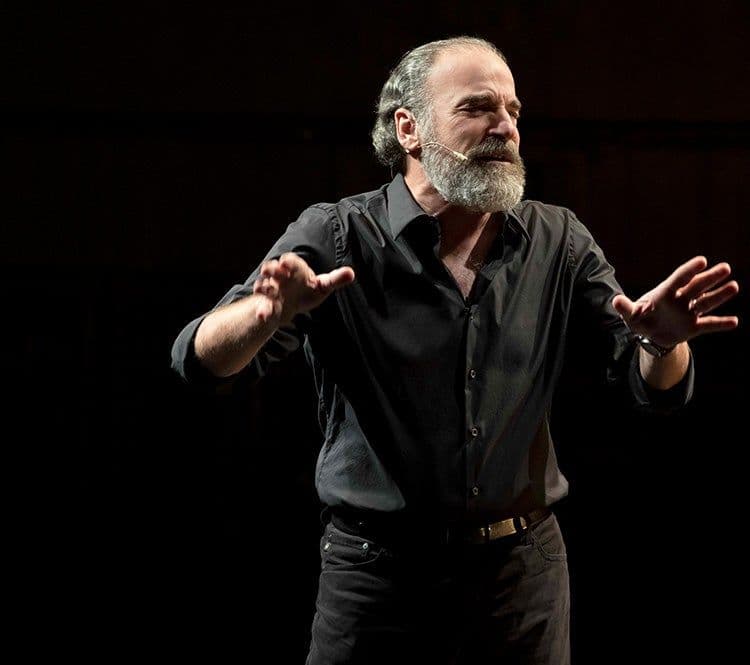Ludwig van Beethoven (1770-1827)
Overture, Egmont, Op. 84
Revolution was in the air when Johann Wolfgang von Goethe wrote his play Egmont in 1786. America had declared independence from Britain in 1776, and in 1789, the French were to begin the long and bloody process of overthrowing their own absolute monarchy. Egmont is set in the Netherlands in the 16th century, then brutally repressed by occupying Spanish forces. The hero, Count Egmont, rouses the Flemish people in revolt against Spanish tyranny. Eventually he is arrested, and an attempt to rescue him by his lover, Klärchen, fails. Klärchen poisons herself, and Egmont is executed—but not before he has had a vision of freedom personified as Klärchen herself, who crowns Egmont with a laurel wreath. Egmont offers his death as a sacrifice for his people, confident that freedom will prevail.
Despite the play's subversive message, Goethe's Egmont was staged by the Viennese Imperial Court Theatre in 1810, and it was for this production that Beethoven wrote his powerfully dramatic Overture. Beethoven's impassioned sympathy for Egmont's cause can be felt at every stage: the slow introduction, alternately stern and plaintive, leads to an urgent, obsessive Allegro that could easily be the first movement of a tragic symphony. As the music seems to be preparing to a grim final climax, the music is suddenly cut off. Silence follows, then a few plaintive chords for woodwind—surely the moment of Egmont's execution. Then, without any attempt at transition, the mood is catapulted into a bright F major and the Overture hurtles to an ecstatic conclusion. In the play—and in the context of Beethoven's own time—this vision of 'Crowned Freedom' is still only a far-off hope.
© Stephen Johnson
Samuel Barber (1910-1981)
Violin Concerto, Op. 14
Allegro
Andante
Presto in moto perpetuo
Samuel Barber was already well known as the most Romantically inclined of younger American composers—not least because of the immediate success of his Adagio for Strings—when he composed his Violin Concerto in 1939. Its twin moods are gentle lyricism and spiky brilliance: not such an unusual combination in 20th-century violin concertos (think of the Prokofiev concertos, or the almost exactly contemporary concerto by Walton); but here, instead of being placed side by side, they are completely separated, with two lyrical movements followed by a brilliant finale.
At first sight, the reason for this might appear to lie in geography and history: Barber began the work on a relaxed summer holiday in Switzerland and completed it on his return to America following the outbreak of the Second World War in Europe. But a more likely explanation has to do with the circumstances in which the Concerto came into being. It had been commissioned by a wealthy American businessman for a violin protégé. When this violinist saw the completed score of the first two movements, he complained that Barber's habitual lyricism was too much in evidence, and there was not enough of a virtuoso nature in the solo part. Barber promised to make amends in the finale, but he did so to such effect that the intended soloist declared that the movement was unplayable! Not surprisingly, the published score bears no dedication, either to the businessman or to the protégé; but it does record that the premiere was given by another violinist, Albert Spalding, with the Philadelphia Orchestra and Eugene Ormandy in February 1941.
The first movement of the Concerto, in G major, is dominated by the long, expressive melody which the soloist unfolds right at the outset. The most important subsidiary idea is a clarinet tune to which Lombardic rhythmic figures (short-long) and modal inflections give a distinct Scottish flavor. These two themes never lose their identities for very long in the central development section, and after a full recapitulation and a short, accompanied cadenza they both figure in the quiet coda.
Woodwind instruments are as prominent in this coda as the soloist. And in the E major slow movement, too, the orchestra has an important part to play: the plaintive principal melody is given in turn to oboe, cello, clarinet, violins and horn before the solo violin makes its first entry. The soloist dominates the more agitated middle section, which ends with another accompanied cadenza, and then remains in the foreground with the impassioned return of the first section.
The timpani launch the A minor finale with the triplet rhythms which are maintained almost throughout the movement, mostly—for literally page after page without a break—by the soloist. Barber occasionally suggests a disruption of their progress by throwing in off-beat accents or cross-rhythms in the orchestra, but the only melodic idea which emerges at all clearly is a chirpy little woodwind theme. Apart from this, the movement is all rhythmic drive, and the soloist's final gear-change from triplets to semiquavers even increases its impetus.
© Anthony Burton
Pyotr Ilyich Tchaikovsky (1840-93)
Symphony No. 4 in F minor, Op. 36
Andante sostenuto - Moderato con anima
Andantino in modo di canzona
Scherzo (Pizzicato ostinato): Allegro
Finale: Allegro con fuoco
The years 1876 and 1877 were traumatic ones for Tchaikovsky. He was suffering increasingly from feelings of guilt over his homosexuality, and considerable mental torment from the fear of its discovery. As a result, he underwent a personal crisis that eventually drove him not just to an ill-advised marriage to a young student (a disastrous affair which lasted only a few weeks in the summer of 1877), but also to near-madness and a pitiable suicide attempt.
Two orchestral works of this time clearly reflect Tchaikovsky's disturbed state of mind. The first was the tone-poem Francesca da Rimini, composed in the autumn of 1876 and depicting the eternal damnation of Francesca and her lover Paolo, condemned in Dante's Inferno to the second circle of Hell for their helpless but illicit passion. The second was the Fourth Symphony, composed the following year, which confronted another specter that had been haunting Tchaikovsky: the destructive nature of Fate. The seeds may well have been sown by a performance of Carmen that the composer saw in Paris in early 1875, but they were undoubtedly brought to fruition by the harrowing events of the following two years. From these, Tchaikovsky emerged with a stronger-than-ever conviction of the power of 'the fateful force that prevents the impulse to happiness from achieving its goal ... which hangs over your head like the sword of Damocles.'
Tchaikovsky wrote these words in a letter to his patroness, Nadezhda von Meck, to describe the stark motto theme that opens the Symphony. The letter goes on to outline for von Meck the feelings underlying the rest of the work, a useful guide to its comprehension even now, though only after it has been borne in mind that it was written after the music had been completed. Thus, we learn that the oppressive waltz-tune that opens the fast section of the first movement signifies resignation in the face of Fate's supremacy, and the lilting second theme (announced on clarinet) the desire to 'turn away from reality and submerge oneself in daydreams. But though the music strives for happiness, it is Fate that gains the upper hand, with the motto theme returning to dominate the later stages of the movement.
For Tchaikovsky, the slow movement—with its haunting oboe melody—evoked 'the melancholy feeling which comes in the evening when, weary from your labor, you are sitting alone. You take a book, but it falls from your hand. A whole host of memories comes ... It's both sad, yet somehow sweet to immerse yourself in the past.' The ensuing Scherzo depicts less clearly defined emotions: Tchaikovsky refers vaguely to 'capricious arabesques,' 'drunken peasants' and 'a military procession,' but in truth a program is irrelevant in this orchestral tour-de-force in which three themes—for pizzicato strings, woodwind and brass respectively—are first alternated, then wittily combined.
The Finale opens in a brilliant whirl of sounds which the sober Russian folk-tune 'In the fields there stood a birch' can only temporarily assuage. 'If you find no reason for joy within yourself', wrote Tchaikovsky, 'go among the people. Observe how they can enjoy themselves, surrendering themselves wholeheartedly to joyful feelings.' Amid the celebrations, however, the Fate theme from the first movement breaks in with an effect so devastating that the movement is brought to a standstill. But this time it cannot win. 'You have only yourself to blame; do not say that everything in the world is sad. There are simple but strong joys.' The Symphony concludes in a blaze of glory, and the composer, for the time being at least, turns his back on Fate.
© Lindsay Kemp



